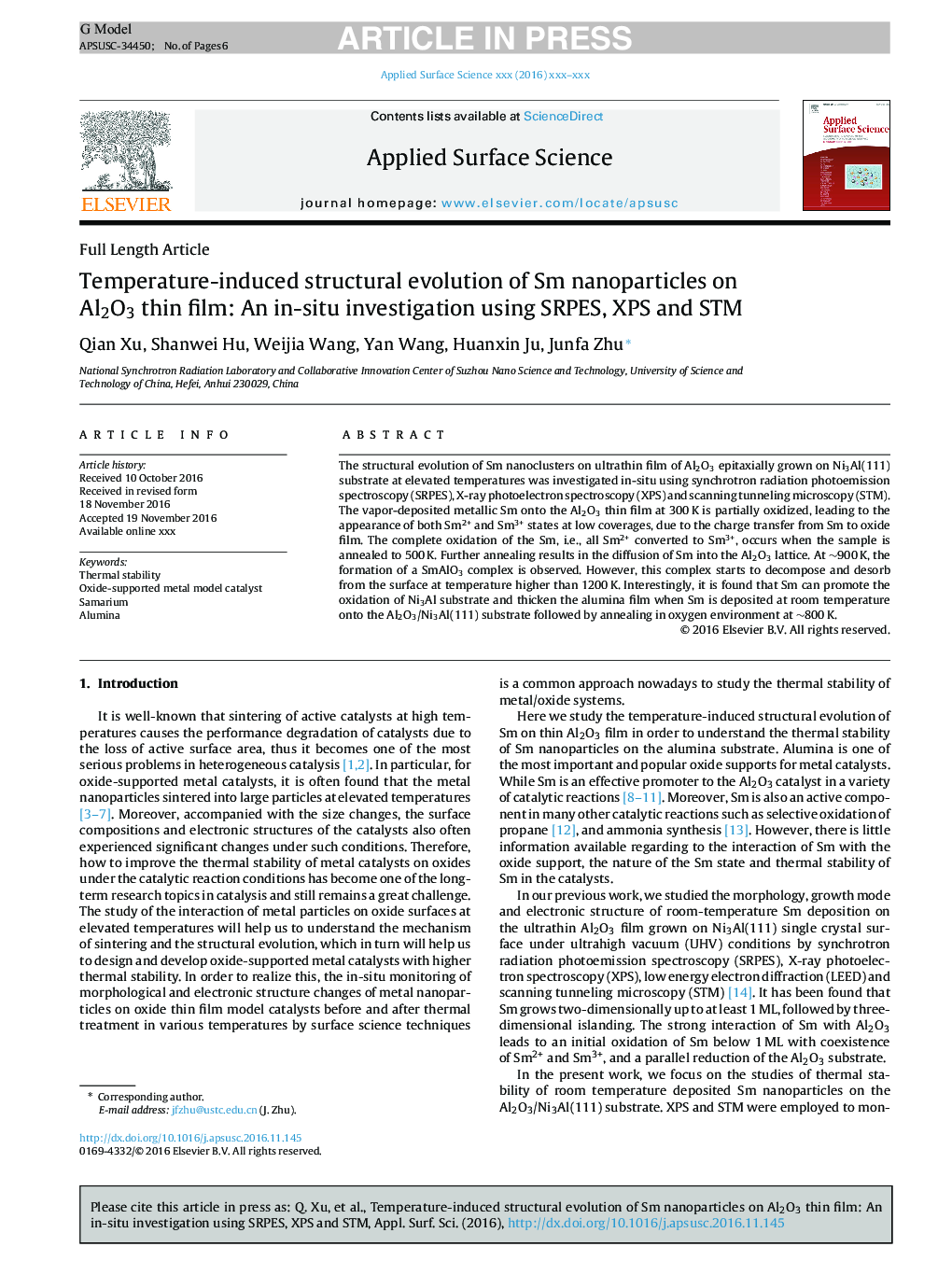| Article ID | Journal | Published Year | Pages | File Type |
|---|---|---|---|---|
| 7836280 | Applied Surface Science | 2018 | 6 Pages |
Abstract
The structural evolution of Sm nanoclusters on ultrathin film of Al2O3 epitaxially grown on Ni3Al(111) substrate at elevated temperatures was investigated in-situ using synchrotron radiation photoemission spectroscopy (SRPES), X-ray photoelectron spectroscopy (XPS) and scanning tunneling microscopy (STM). The vapor-deposited metallic Sm onto the Al2O3 thin film at 300Â K is partially oxidized, leading to the appearance of both Sm2+ and Sm3+ states at low coverages, due to the charge transfer from Sm to oxide film. The complete oxidation of the Sm, i.e., all Sm2+ converted to Sm3+, occurs when the sample is annealed to 500Â K. Further annealing results in the diffusion of Sm into the Al2O3 lattice. At â¼900Â K, the formation of a SmAlO3 complex is observed. However, this complex starts to decompose and desorb from the surface at temperature higher than 1200Â K. Interestingly, it is found that Sm can promote the oxidation of Ni3Al substrate and thicken the alumina film when Sm is deposited at room temperature onto the Al2O3/Ni3Al(111) substrate followed by annealing in oxygen environment at â¼800Â K.
Keywords
Related Topics
Physical Sciences and Engineering
Chemistry
Physical and Theoretical Chemistry
Authors
Qian Xu, Shanwei Hu, Weijia Wang, Yan Wang, Huanxin Ju, Junfa Zhu,
